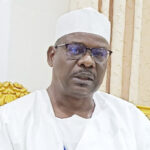If there is any social issue that buffeted the minds of many governors in the northern states, it could be none other than what to do with tsangaya schools. The tsangaya schools are populated by hundreds and thousands of almajirai in many towns and villages, strewn all over, yet their products are of hardly any use to the modern economy. The effort to integrate them has covered many years of various kinds of effort by a succession of administrations without any success. Plenty of billions of naira has gone down the drain building classrooms, moving children here and there but the tsangaya schools have virtually remained as unassailable and backward as they have always been.
The pandemic era has put the almajirci situation in severe, bold relief. When everyone was supposed to be isolated at home, the almajirai were found not in their tsangaya but in the streets hungry, many poorly clothed, uncared for and thus became victims of mass deportations to their putative states of origin. Almajiranci and the tsangaya schools once more became hot topics of discussions not only at seminars and webinars but between governors. Clearly, there was need for synergy as this was an issue that crossed state borders but state governors were instead speaking in different tongues and going in different directions.
- Nasarawa APC chair ‘assassinated’, Zamfara imam, 30 others still in captivity
- Bandits’ big return on Abuja-Kaduna road
While Kaduna State government was talking of abolishing almajiranci once and for all, Yobe and Borno state governments would rather not abolish almajiranci but integrate the tsangaya with normal schools. Nonetheless, as long as the pandemic lasted, there were efforts in some states to cater for the homeless almajirai in special centres with shelter and food. However, as soon as the isolation was lifted, they were back in the streets. It seemed as if we were still groping for solutions to the plight of the almajirai and the place of the tsangaya schools in the overall educational architecture of the country. The importance of what to do with them would become manifest when you are told that there are probably more than 10 million almajirai in the country that are not captured in normal schools.
Many factors have militated against achieving the integration effort. One is the overbearing influence of the federal government which, because it holds the purse, then it must have control over what manifestly is a local affair. While that is being sorted by legislation and other means, there is a more fundamental problem that had festered since the clash of two strands of school faced each other in the colonial times. There is an ideological gap that had delayed acceptance of the modern schools by the tsangaya group. We have to surmount that to get full integration. In my opinion, that is the missing link. We have to look at the gap in the face to support the integration of the tsangaya into the normal stream, to enable this part of the country that has been left so far behind in the educational race to catch up.
To my delight, the committee that Borno State government inaugurated last week to integrate the two strands of schools has elements of finding that missing link. The 14-member committee is being led by an outstanding scholar, Sheikh Aliyu Abdulfatihi. The terms of reference to guide the committees work are clear: collection of comprehensive data leading to developing an action plan for the government to upgrade and enhance tsangaya education and all to be completed within one month. Sheikh Aliyu is a scion of the family of Sheikh Ahmad Abdulfatihi, one of the earliest promoters of modern Islamiyya schools in Maiduguri. Sheikh Aliyu now heads the Ahmad Abdulfatihi Foundation that runs a number of primary and secondary schools in Maiduguri with a tsangaya orientation. We grew up together in the same vicinity and I know him to be an urbane scholar today who has seen many parts of the world in his educational pursuits. With the support of the members of the committee comprising sheikhs that I know to be passionate about the advancement of tsangaya education, I guess the missing link would finally be found and a report for implementation would be on the table within a few days. The next challenge for the government would be that of implementation.
Congratulating His Lordship
I could be drawing the ire of His Lordship, Abdu Aboki, the newly sworn Justice of the Supreme Court, for going public with these congratulatory words. I suppose he would excuse it as a set mate’s privilege which should only draw a deep chuckle. Promoted from the Court of Appeal, he had earlier served for many years as a judge in the Kano State Judiciary. Our paths crossed in Kongo campus, ABU, Zaria where we related closely for the years we were there. He belongs to that distinguished set of the Law School (1973-76) that has given Nigeria many outstanding public servants in the legal profession, including late Justice of the Supreme Court, Saifullah Muntaka Coomassie, serving Justice of the Supreme Court, Musa Dattijo Muhammed, Ibrahim Auta who retired recently as Chief Judge of the Federal High Court, late Shehu Atiku, Chief Judge of Kano State, Ibrahim Bala Mairiga, retired Chief Judge of Kebbi State, Senators Daisy Danjuma and Umaru Dahiru. My Lord, congratulations.

 Join Daily Trust WhatsApp Community For Quick Access To News and Happenings Around You.
Join Daily Trust WhatsApp Community For Quick Access To News and Happenings Around You.


